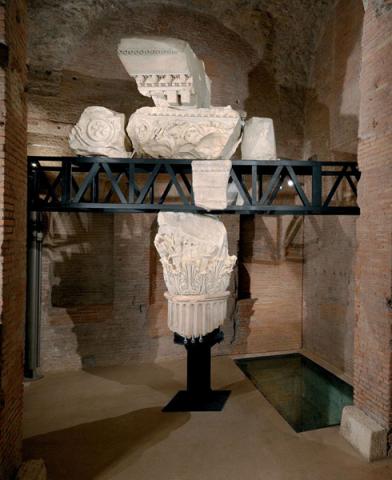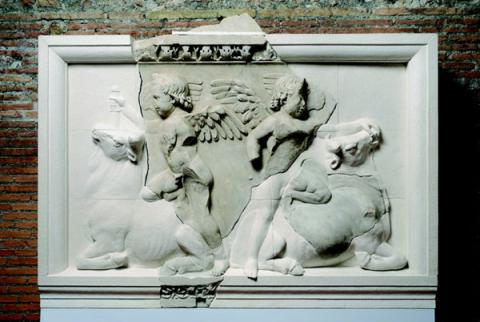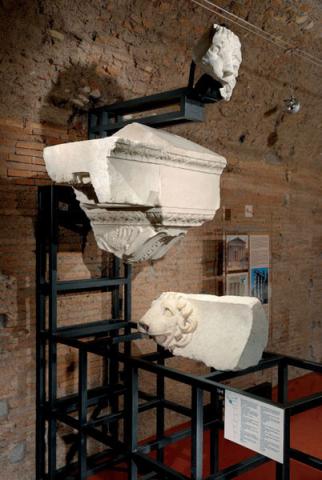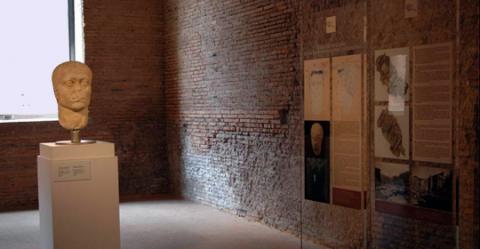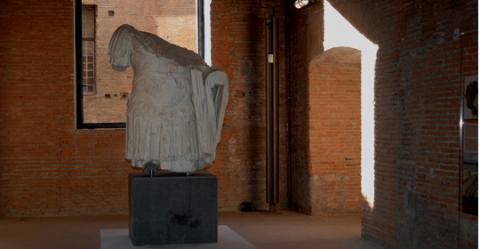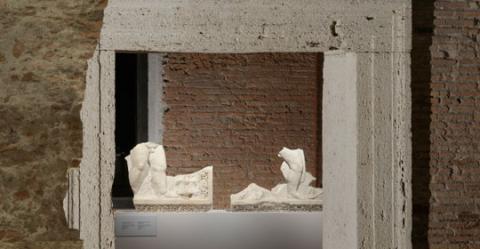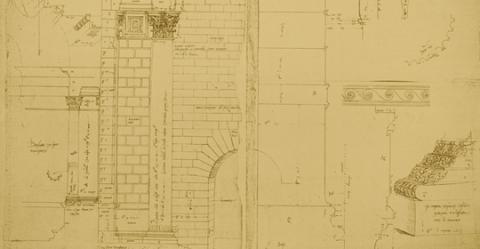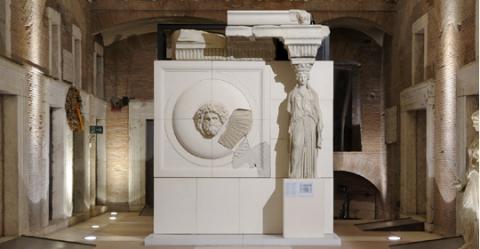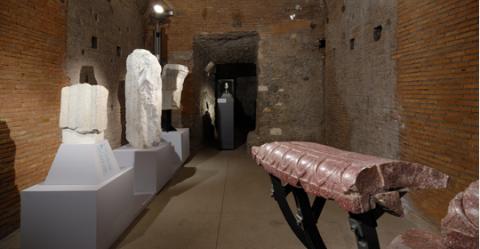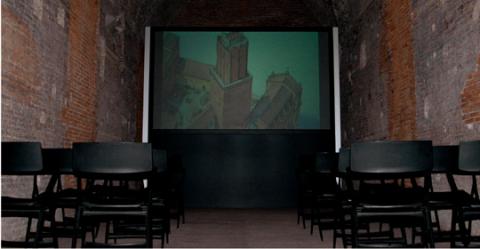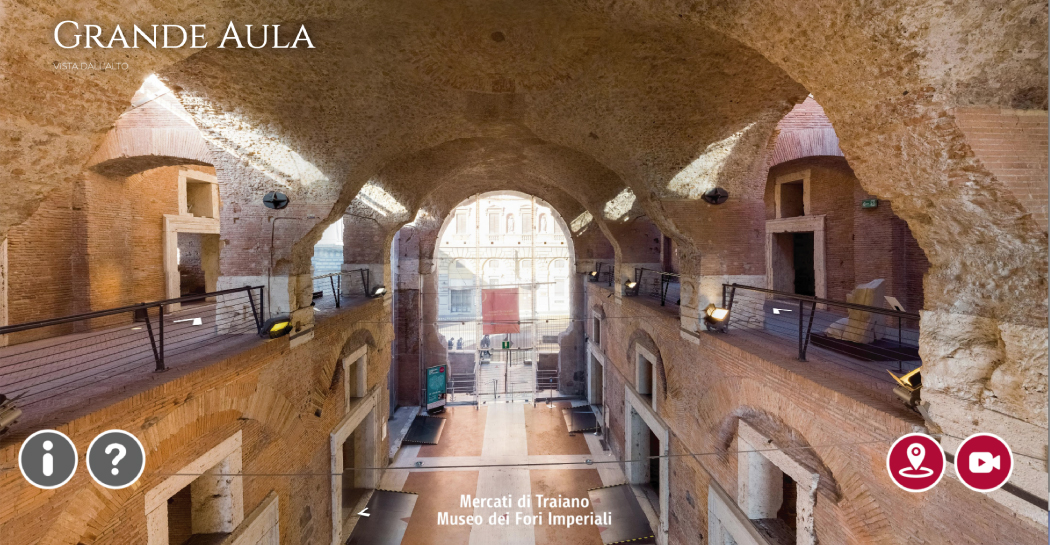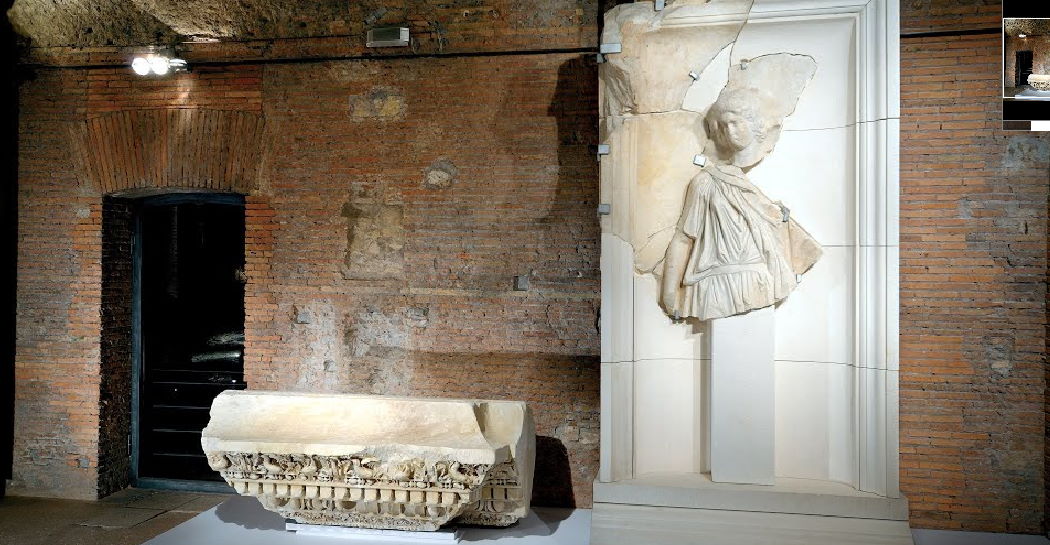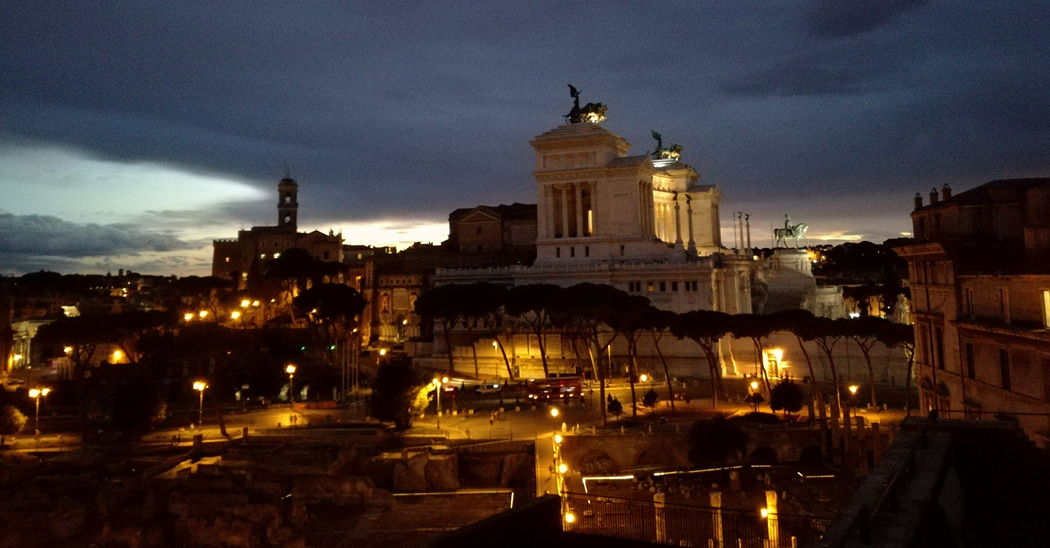Route through the rooms
The sculptural-architectural decoration of the Fora provide the main focus of the Museum, but it also sets out to explore the way in which they were built and to provide an image of how the buildings looked when completed.
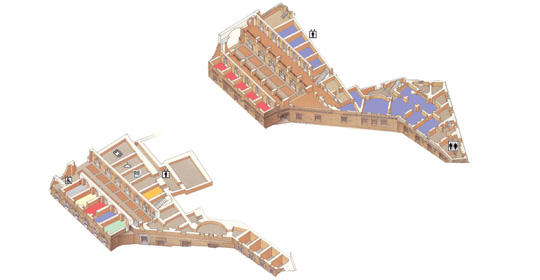

Using an architectural model of what was to be built was an integral part of the original design process. It even incorporated the colour(s) to be applied to the intonaco of the buildings, and, through the use of poly-chrome marbles, to all the marble surfaces too. In planning the exhibition route, the aim was to provide, whenever the constraints of the extraordinary architecture of Trajan's Markets would allow, some sort of continuity to the architectural motifs by carefully studying how to integrate original pieces with modern moulds in any reconstructions that would be displayed. Other factors were the height of the rooms, as it was important to recreate a sense of how the different spaces in the complex related to each other, and a desire to draw attention to both the decorative elements and the symbolism or “figurative plan” that had been adopted as a tool to communicate with the ordinary people of the time, and to see how these elements impinged on the construction method.
The Museum is located at the northern entrance of the archaeological area of the which is why a multi-medial introduction to the entire Fora precinct is located on the ground floor of the Great Hall along with other rooms, each home to a particularly significant piece that symbolizes the Forum to which it is dedicated. The upper floor of the Hall is home to two sections, one (on the via Biberatica side), dedicated to Caesar's Forum, and the other “Memories of the Ancient Past”, that features sculptures and architectural elements from the Temple of Mars Ultor that have been known about and reproduced from the 15th century onwards.
On that same floor, the museum route continues through the rooms of the Central Body dedicated to the architectural-sculptural decorations of the porticoes, exedras and Hall of the Colossus in the Forum of Augustus. Items that have been loaned, as well as copies of pieces that no longer exist in Rome are also on display, some of which are only known about because whatever appeared in Rome was frequently, and quite quickly imitated by the Fora in the provincial capitals too.


























